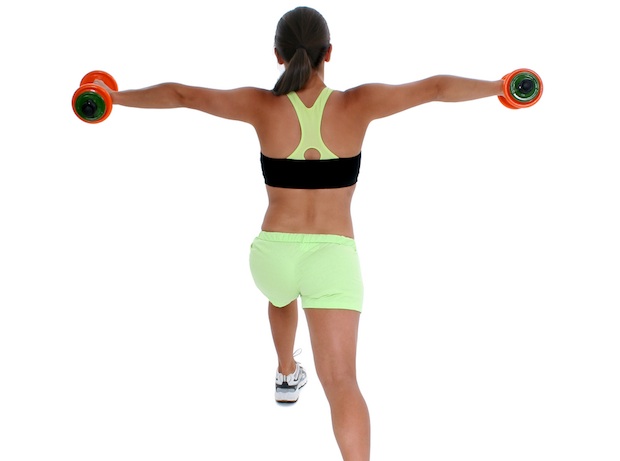After taking one look at endurance runners’ stick-thin bodies, it’s hard to imagine they do anything other than pound the pavement. The truth, however, is that strength and resistance training is just as important to a runner’s regimen as running itself.
Lifting weights isn’t just about bench pressing and overhead squats—especially not for runners. Strength training helps develop flexibility, mobility, balance, and core strength and, most important, helps prevent injury, says EZ8 running coach Kathy Pugh. Read on for five reasons you should incorporate strength training into your workouts at least two to three times a week.
1) You need better core strength.
Having strong leg muscles might seem like the most important aspect of running, but any running coach will tell you that a strong core is vital. Dan Dreyer of Chi Running preaches that the art of running starts from one’s center, allowing our bodies to effectively execute the “runner’s lean.” “I know I’ve run correctly when my abs are sore the day after a race,” Dreyer has said.
Try the plank: Pughsays the standard plank is her go-to exercise for runners. While it’s a full-body exercise, without a strong core it’s nearly impossible to do correctly. Hold the position for 30 seconds, 45 seconds, then 60 seconds. Or try our Well+Being Plank Workout.
2) You’ll run faster.
Think about it: Why wouldn’t a stronger body help knock a couple of seconds off your 10K time? Research shows that endurance runners who weight train can improve their running economy, or oxygen consumption, by 4.6 percent. In particular, multiple studies have proven that resistance training can improve runners’ 3K and 5K performances by 2.9 percent.
Try the single-leg squat: “What is running but a continuous series of single-leg squats?” says DC Running coach Mike Hamberger. Rest one leg behind you on a bench or chair and slowly squat on the opposite leg. Do three sets of ten reps on each leg. Hold light weights for more of a challenge.
3) You need a stronger back.
Strong back muscles, especially the lower ones, provide you with stability, power, and endurance to run, says Pugs. And in addition to core strength, a healthy back means better posture, which you’ll need on that last mile of a marathon to keep from slouching.
Try the Superman: Lie on your stomach with arms and legs extended in front and behind you. Lift both your upper body and legs a few inches off the floor. Hold for five seconds, rest, and repeat ten times.
4) You’ll have better form.
A big problem Pugh sees among new runners is something she calls “the Rocky.” New runners tend to swing their arms across their midsection instead of front to back. While doing so won’t necessarily cause injury, it’s simply not efficient and is a waste of valuable energy. You’ll need good form and a final boost of energy when you’re trying to squeak past another runner at the finish line.
Try the sit-down run: Sit up straight on the floor with your legs extended in front of you. While holding light weights or soup cans, pump your arms to mimic the act of sprinting for 30 seconds. Rest and repeat five times.
5) You’ll be more toned.
Not that there’s anything wrong with it, but it will take a lot more than doing body-resistance exercises and light weight-lifting to bulk up. But incorporating strength training into your workouts will give you some muscle definition and a metabolism boost, and will allow you to continue burning calories post-workout.
Try Pilates: Hamberger swears by Pilates as a runner-centric cross-training method. By incorporating small, repeated movements, Pilates aims to increase joint mobility and build core and upper-body strength. Try Well+Being’s five-step Pilates workout.



















